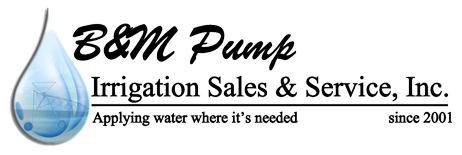How A Center Pivot System Works
In the Great Plains of America, center pivot irrigation was the way farmers grew crops and supported their communities. Without it, families would have been unable to shop at local stores, deposit their wages in local banks, and support their children’s schools. Over the years, pivot systems have become more complex. They now do much more than just pump water to the ground.
Pumps
A Center Pivot System requires many different components to work together to distribute water correctly. The first component is a pump that is used to lift water and send it out to the towers or pipe lines. Pumps work with a suction head to help lift water into the pipes or towers. This suction head includes both the vertical lift and friction losses through the pump, elbows, and foot valves in the suction pipeline. For the majority of pumps, the maximum suction head is about 33 feet. The minimum suction head is about 20 feet. However, the actual maximum suction lift is less than this due to the friction losses in the suction pipeline.
Pipes
Each pivot is made up of a series of pipe spans that extend between ground-based support structures called towers, or trusses. The length of these pipes depends on the manufacturer. They come in a variety of sizes, from 4 inches to 10 inches, and can be made of high-strength steel, aluminum, galvanized or coated steel, chromium-nickel, or stainless steel. Each pipe is connected to the next by a coupler device. Some include a spring-loaded valve, while others are manually operated. These valves prevent pressure surges that could cause damage to the mainline and/or the pump. They are also installed to relieve excessive evaporation that can occur in the system.
Sprinklers
A center pivot system applies water to a field using a pipe-based sprinkler package that is supported by trusses mounted on wheels. The whole machine moves in a circular pattern, feeding each of the sprinklers with water from a central point called the pivot. Today, most center pivots are hydraulic-powered. They still require a water source like a well pumping up groundwater, which delivers the design pressure and flow rate required to reach the pivot and sprinklers.
The power needed to move the whole machine is usually run off a generator or public electricity, but it can also be run from a motor installed on each tower. Power cables travel down the span pipes to each tower box, which sends 120 and 480 volts of alternating current to the drive motors when signaled by the control circuits.
Towers
A control panel controls the machine by sending signals to tower boxes mounted on each drive unit. It allows the operator to stop, start, reverse, and adjust irrigation amounts. Each tower is provided with a roll-forward brake to prevent it from rolling ahead on a downhill slope.
Each drive unit in the center pivot has a microswitch. This microswitch, located in a box in the tower, controls the Last Regular Drive Unit (LRDU). When the LRDU is activated, it sends signals to the switch arm to pull both the first span and the second-to-last tower up to an angle that activates both towers. This process keeps the towers in line, keeping the pivot circle spinning.
Categorised in: Irrigation
